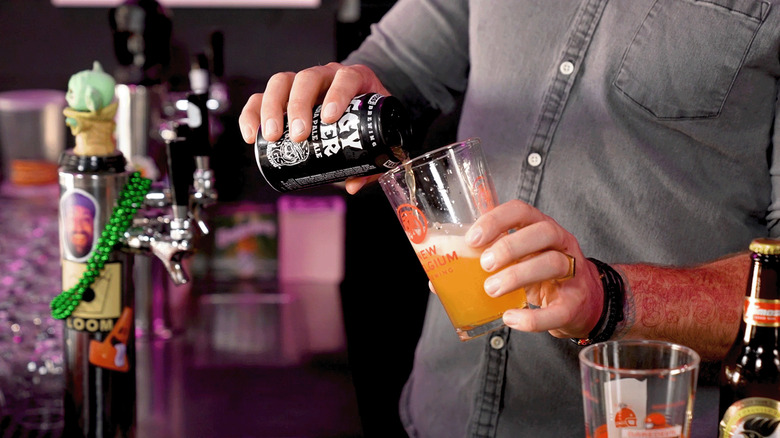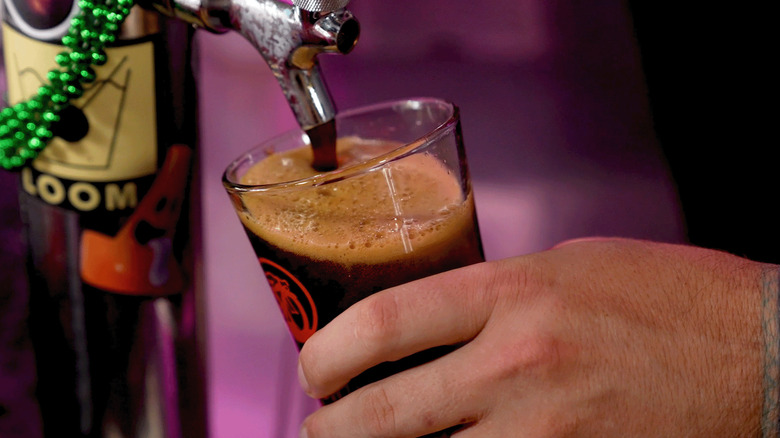You're Probably Pouring Beer Completely Wrong. Here's The Right Way
When you're pounding beers to, well, feel the effect of them, it's likely you're drinking them straight from the can or bottle, and that's great — they wouldn't come packaged that way if they tasted terrible served up in that fashion. But if you have a nice seasonal craft IPA (let it sit before you drink it) or a limited edition stout (which, depending on the brand, might not be as small-batch as you think), you'll want to really taste and savor it, and to do that, you'll need to pour it into a pint glass.
Pouring a beer from a can or bottle to a glass doesn't sound like rocket science, and it isn't; but there is a right way to do it, according to Kamaron Lockwood, craft bartender and recipe developer for the video You're Doing It Wrong All Wrong – How to Pour A Beer for Chowhound. If you're just dumping the beer out of the bottle or can straight into the glass, letting it foam up, you're not maximizing your beer experience — as Lockwood lays out, you need to use a rinsed glass, control the flow of beer, and angle the glass correctly to get the perfect pour.
The details of a perfect beer pour
Since pouring it into a glass helps beer to "open up" and lets him "get his nose into the beer a little bit more," Lockwood recommends starting with a clean, rinsed pint glass that helps "lubricate to allow for a smooth pour of a beer, and it also gets rid of debris and particles, so that way it doesn't tamper with the actual head of the beer, causing it to overreact."
Then, you'll pick up your can or bottle with one hand and, holding the glass in the other hand at about a 45-degree angle, lightly tip it so that the beer runs down the interior side of the glass. You don't want to pour too fast, and you'll want to make sure that the head "isn't building up too quickly," as Lockwood says. Ensure that you're "always staying right above the head" with your pour, and note that different beers produce different heads, so the speed at which you can pour the beer may vary.
You can also try pouring your beer from a bottle a slightly different way to help form more of a head with a beer that doesn't form as much of one: As Lockwood demonstrates, you'll hold the glass straight up-and-down, and then position the bottle so that the beer pours against the opposing side of the glass.
Fantasy draft: How to pour beer from a draft line correctly
While not many people have draft lines in their homes, if you happen to, you probably know all about keeping the pressure set correctly for the type of beer you're serving, and the wonky nature of the first couple of pours. According to Lockwood, you'll just tilt your glass at a roughly 45-degree angle and let the beer slowly fill the glass; adjust the glass to a more upright position as you near the top. Lockwood also advises keeping a squeeze bottle of water handy to clean up any spills that might occur over the side of the glass.
You might also want to know the proper way to pour draft beer into a tulip glass. Why would you want a tulip glass? As Lockwood says, "for the right type of beer, it can really enhance the experience, especially in the way that it traps the flavor." The glass should, of course, be rinsed first, held at a 45-degree angle, and then just like the pint glass pour, straightened up as the beer nears the top.
Static Media owns and operates The Takeout and Chowhound.

